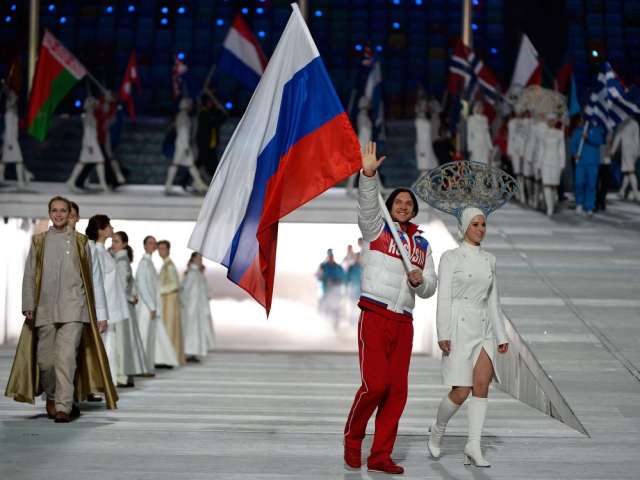What will Russians be allowed to wear at the Olympics? The IOC has answered — in excruciating detail

When the Russian Olympic team was barred from the coming Winter Games for running a doping program, the ruling by the International Olympic Committee raised a host of important questions.
Can it be considered the most elaborate doping conspiracy in sports history? How many Olympic events were corrupted by Russian athletes using illicit substances? And, for any athletes from Russia who manage to get special dispensation to participate as neutral athletes in the 2018 Pyeongchang Games, what will the textile specifications be for their uniforms?
The IOC has now answered some of those questions, in excruciating and glorious detail.
Russian athletes who convince sports officials that they are clean and were not part of the doping conspiracy will get to compete at the Winter Games, but will not officially be representing Russia. Instead, these athletes will be known as “Olympic Athletes from Russia.” And the IOC clearly plans to be vigilant that the word “Russia” doesn’t make too big of an appearance at the games.
In this Feb. 23, 2014 file photo, figure skater Maxim Trankov carries the Russian flag into the closing ceremony of the Sochi Olympics.
Under rules announced Wednesday, with surprisingly little fanfare, Russian athletes’ and officials’ uniforms and equipment can say only two things: “Olympic Athlete from Russia” or the abbreviation “OAR.”
Olympics officials, showing great savvy, got out in front of any efforts at typographical shenanigans.
“Print size for words ‘Olympic Athlete from’ should be equivalent to the word ‘Russia,’” the IOC said, thwarting any delightfully clever attempt to print a tiny “Olympic athlete from” dwarfed by a jumbo “Russia,” a tactic likely proposed by several nine-year-olds.
The Russians can also forget about doing something fancy with their new designation. Fonts should be “as generic as possible.” So no bubble letters that would garner global support for the Russian athletes who are not officially Russian athletes but rather neutral athletes (from Russia).
The announcement included a proposed logo for Russia, with the words “Olympic Athlete from Russia” in a bland red circle almost designed to sell as little merchandise as possible.
 The IOC’s proposed logo for “Olympic Athletes from Russia.”
The IOC’s proposed logo for “Olympic Athletes from Russia.”
The Russian flag’s colours are red, white and blue, but the neutral athletes’ uniforms can’t have all three colours at these games.
“Only single or dual color elements are permitted,” the IOC said in a document that somehow has not yet gone viral in the textile rules community.
But what if the top was red and white and the pants blue? Nope.
“Separate items of clothing cannot create a tricolor,” the IOC added.
Yes, you read that correctly: Olympic officials even barred the neutral athletes (from Russia) from creating a tricolor, surely an Olympic first.
In fact, let’s steer clear of Russian red, white and blue entirely, shall we? “The colors used in uniforms, accessories and equipment may not be in exactly the same pantone as those used in the Russian Federation flag.” The IOC helpfully advises: “It is suggested that these are darker in color.”
The IOC is obviously taking great pains to ensure that it everyone knows that these “Olympic athletes from Russia” are most definitely, positively not Russian Olympic athletes. Everyone clear?





